Genre: Simulation Developer: Bullfrog Productions Publisher: Electronic Arts Players: 1 Released: 1990
God was a jerk in the Old Testament. He created man only to submit him to floods, plagues of locusts, seas of blood, and so on and so forth. The God of old was a violent god, ready and willing to take the lives of his people should they rouse His ire or even just to test the faith of those loyal to Him. The Old Testament is filled with stories about God creating and destroying the lands and lives at will, and Bullfrog’s Populous lets people join in on the fun.
The player assumes the role of a Divine Being battling against his evil counterpart for control over the world. As a god, you’ll have the power to raise and lower land and unleash a variety of natural disasters anywhere on the map. It’s a great job, but the fun comes at a price – you need to develop enough followers to worship you, which in turn provides mana to fuel the chaos. Luckily for you as a god, worshipers are easy enough to cultivate, requiring only a flat plot of land to build a house and tend to some crops. The larger the available land, the larger the building is created, which allows for even more (though slower to develop) mana.
Each deity starts with a handful of followers who will quickly seek out a piece of nearby flat land and build the largest structure it can accommodate. Until these worshipers build homes and reproduce, you’ll be limited to just a few raised and lower land actions before you run out of mana. Thus, while castles pay off the most in the long run, lower-level huts are key to building mana early. This is especially important on levels where environmental conditions such as snow or extreme heat can prove deadly to wandering followers, or boards where your opponent begins with more mana (and thus more destructive powers) early on.
With a bit more mana accumulated, you’ll have access to the Papal Magnet, which allows limited control over the direction of your followers’ growth. After using the ankh command to anoint a leader among your people, you can then activate the Papal Magnet to strengthen the leader’s power by having other worshipers merge into him to make him stronger. Every follower in Populous has his own strength and health determined by which building produced him. Though attracting followers into the leader will reduce your overall population, the strength you build pays off when using one of the latter mana powers, the knight command.
A leader converted into a knight will seek out enemy territories, killing and burning everything in his path. Despite the availability of floods, earthquakes, and other natural disasters, knights are the powerhouses in Populous, tearing apart the enemy’s followers and leaving behind burned houses and crops unsuitable for repopulation. Though a knight can be killed with a simple swamp or sinking the ground he’s on below sea level, the computer A.I. isn’t smart enough to use such tactics, giving the human player an edge and making the good deity knights far more devastating.
In fact, the other available mana powers — earthquake, swamp, volcano, flood, and even Armageddon — really pale in comparison to the knight, especially with the A.I. being so ill equipped to take necessary action against them, instead preferring to let its people just battle the knight one after the other until it has thrown enough bodies to wear it out. The computer opponent just doesn’t play smart and would be a poor doormat if the game did not grant it additional powers, extraordinary speed, and even player handicaps. While the A.I. will take the predictable path and has certain exploits to take advantage of, the game demands so much more of the player that it feels cheap, particularly at higher levels. Thankfully, the game will let you pause to survey the map and spot where changes are needed, an inclusion which helps balance out the computer’s speed as well as the general sluggishness of playing a mouse-controlled game with a standard video game controller. Populous makes for a good single player game even with the shoddy AI, but the lack of a two-player mode as included in the PC original does keep the game from reaching its full potential.
The unique screen layout of the PC original looks great on the television. The game is functional and stylish, presenting an isometric detailed world view alongside an open book displaying the zoomed-out map and a crest indicating various game statistics. All icons are easily identifiable and accessible, and the bar above the visible portion of the map does a nice job of letting the player quickly see what powers he or she has available to use. Icons are used to trigger the individual mana disasters as well as set flags to jump around the map quicker and keep track of your leader and knights. The pointer does have an odd way of moving around over the map; it jumps to the tip of the land occupying a grid instead of selecting the grid itself, which feels and looks odd, especially when dealing with tall landmasses, but this method makes adjusting the landscape easier to manage overall.
Unfortunately, the game can run a bit slow at times, and the more action there is in the world, the slower the game gets. This can also impede the controls a bit as well, making pausing the game the only recourse to get precise control over the environment, and even that can still result in a jumpy delayed cursor. Slowdown notwithstanding, the game looks great with a impressive color usage and general style. Given the number of sprites the game displays and needs to keep track of, this is excusable or at least understandable. On the downside, the music is severely lacking; apart from the title screen, there is no music, just a simple heartbeat sound that speeds up as the game nears its end. While this does help you hear certain sound effects that are vital to playing, from the sound of a person drowning in a swamp to the clash of a knight attacking a castle, its absence is difficult to overlook, and the constant “thump-thump thump-thump” can be aggravating.
Quibbles about the A.I. and lack of music aside, Populous is a groundbreaking game that is still enjoyable and provides a unique experience, even including its own sequels. The Genesis game was released too early to include the alternate landscapes available in the expansions Populous: The Promised Lands and Populous: The Final Frontier, and most will find the SNES release preferable due to the later release (two years after the original PC and Genesis port). This Populous features grass, snow, marsh, and desert climates, which are minor graphic and color variations of the standard grass maps. The expansions included all kinds of silly new maps including a Candy Land style, none of which really don’t fit the atmosphere of the game. Boasting over 500 passworded levels, Populous is arguably the longest real-time strategy game created as far as standard missions go. While most players may not have the resolve or desire to see the game to the end and despite the existence of the SNES update, Populous remains an innovative addition to the Genesis catalog that’s not to be missed.
SCORE: 8 out of 10


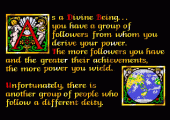
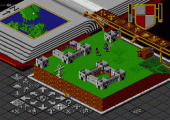
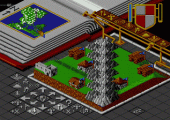
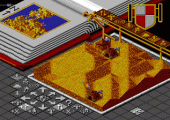
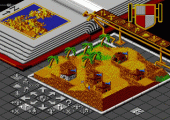
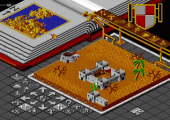
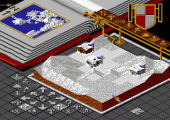
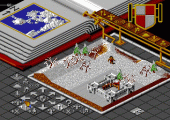
Recent Comments